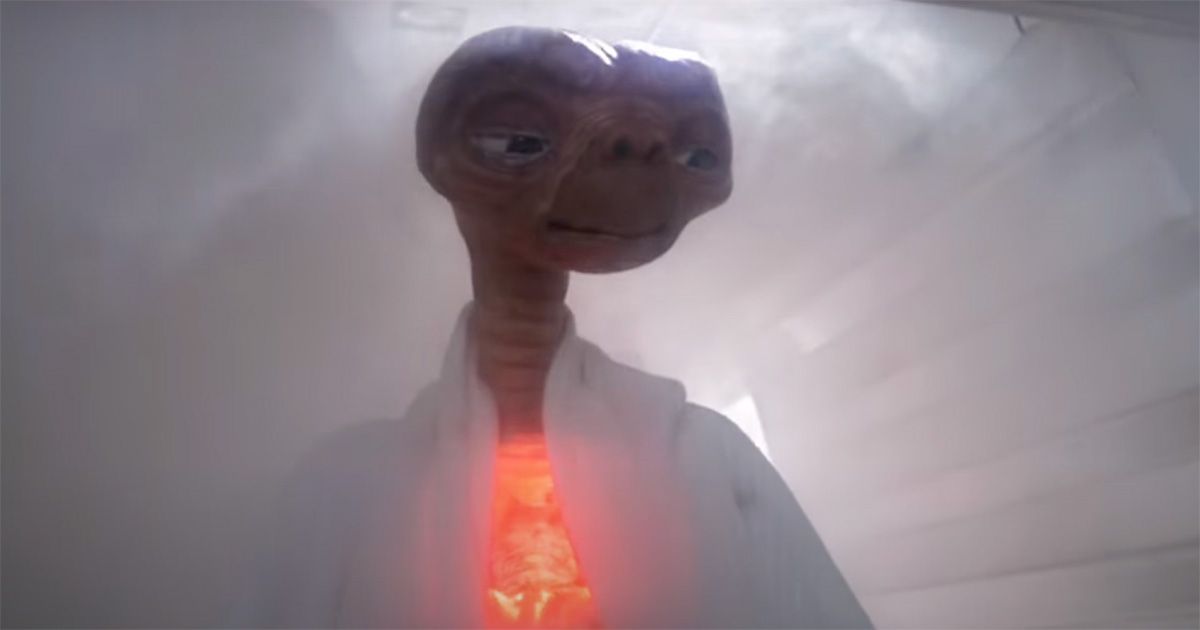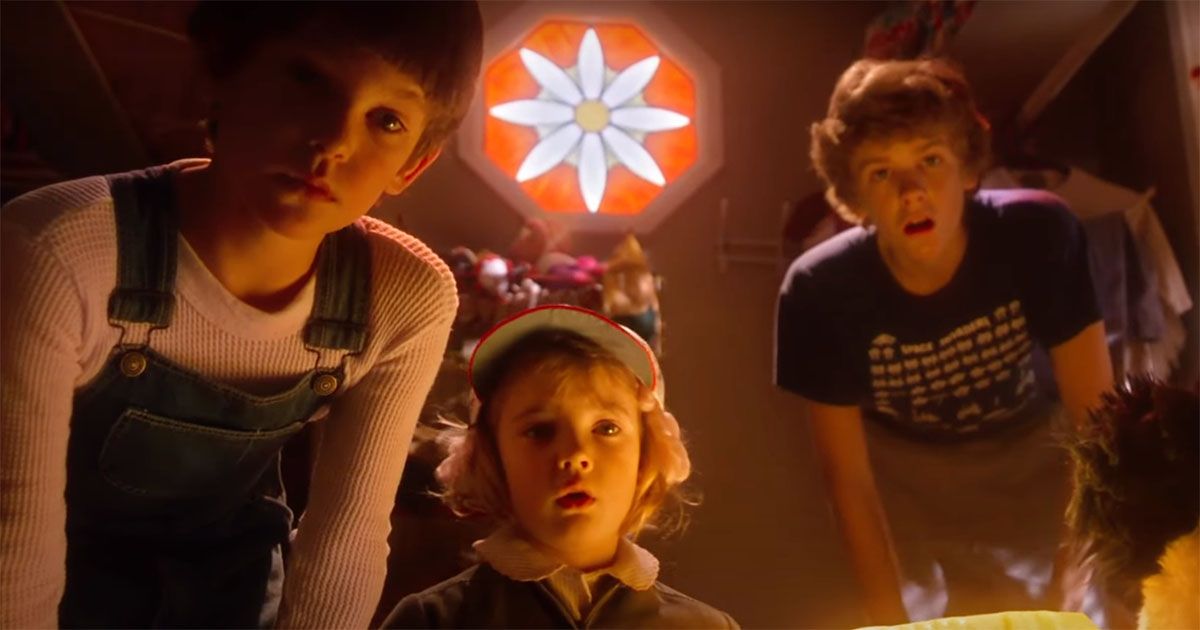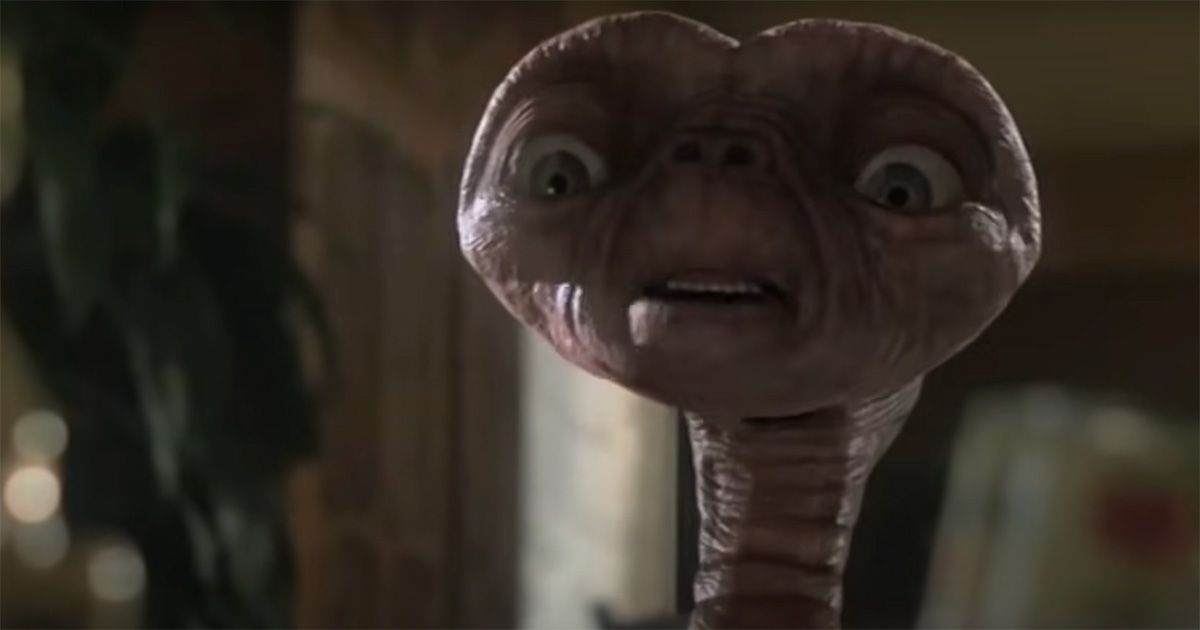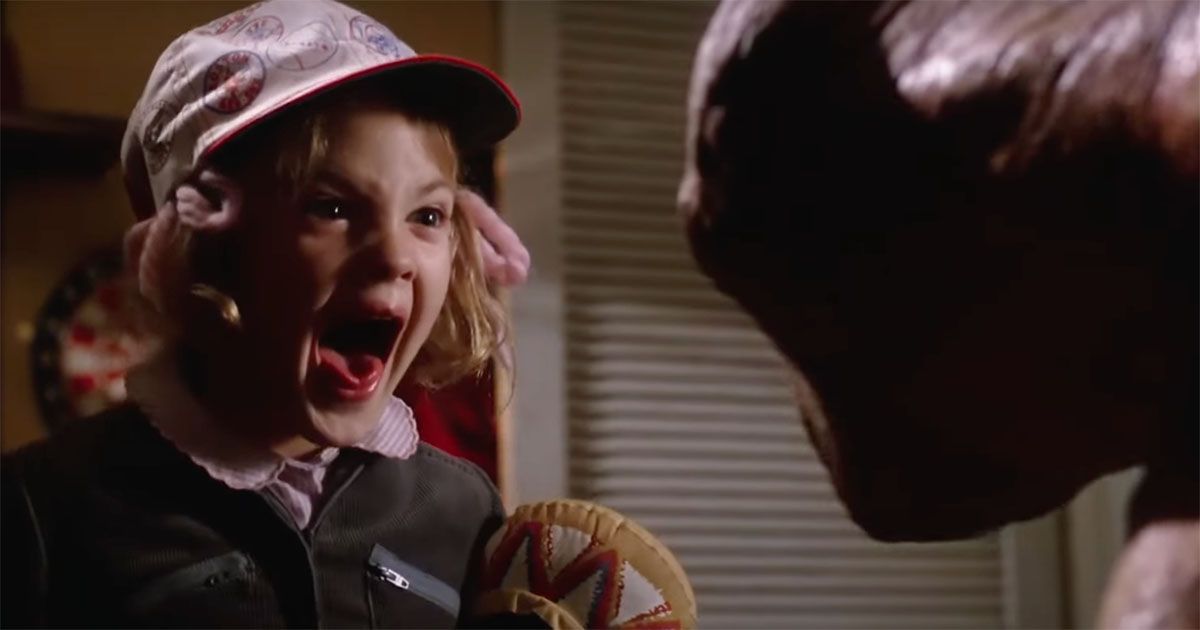What E.T. the Extra-Terrestrial Taught Us About Connection and Sacrifice
E.T. the Extra-Terrestrial (1982) directed by Steven Spielberg is a nostalgic classic exploring childhood innocence and friendship, rated 7.9/10.

"E.T. the Extra-Terrestrial," directed by Steven Spielberg in 1982, has since become an iconic staple of American cinema. Written by Melissa Mathison and featuring notable performances from Henry Thomas, Drew Barrymore, and Dee Wallace, the film tells the touching story of a young boy named Elliott who befriends a stranded alien.
The brilliance of Spielberg lies not merely in the spectacular visual effects, but in the film's exploration of themes such as childhood innocence, love, and the profound connections we forge with those who are different from us.
As the children work to protect E.T. from government agents and help him return home, the film unfolds with a blend of wonder and humor. The emotional depth conveyed through the children's performances has a universal appeal, inviting audiences of all ages to engage with the narrative.
Yet, while "E.T." is a heartwarming tale of friendship and adventure, it also elicits deeper reflections on isolation and the innate desire for connection. The film's ability to intertwine these elements crafts a poignant experience that endures across generations, inviting a reevaluation of its lasting impact on both cinema and the hearts of viewers.
| Attribute | Detail |
|---|---|
| Title | E.T. the Extra-Terrestrial |
| Director | Steven Spielberg |
| Writer | Melissa Mathison |
| Actors or actresses | Henry Thomas, Drew Barrymore, Peter Coyote |
| Rated | PG |
| Runtime | 115 min |
| Box Office | $439,454,989 |
| U.S. Release Date | 11 Jun 1982 |
| Quality Score | 7.9/10 |
Synopsis
In "E.T. the Extra-Terrestrial," Elliott discovers the alien after its spaceship accidentally leaves it behind. With a childlike sense of wonder, he begins to forge a bond with E.T., sharing secrets and experiences that transcend their different worlds. As their friendship deepens, Elliott introduces E.T. to the joys of earthly life, from eating candy to flying on a bicycle. The film beautifully depicts this transformation, highlighting the innocence of childhood alongside the harsh realities of the adult world.
However, government agents, suspicious of the extraterrestrial's presence, shatter their idyllic existence as they begin to close in. The film intensifies as Elliott and his siblings rally their friends to protect E.T., emphasizing the power of friendship and collective action in the face of adversity. The narrative reaches its climax with a thrilling escape, skillfully merging tension and tenderness, and culminating in a suspenseful chase through the suburban landscape.

Ultimately, "E.T." reaches an emotional crescendo as the alien must return to its home planet. The poignant farewell scene captures the essence of love and sacrifice, inviting audiences to reflect on what it means to support someone you cherish, even when it requires letting go.
The film concludes with a sense of hope, leaving viewers with the lingering message that love can transcend the boundaries of space and time. This timeless journey endures, cementing 'E.T.' as a definitive masterpiece within the realm of science fiction and extending its influence far beyond.
Themes
"E.T. the Extra-Terrestrial" is a cinematic experience that transcends mere storytelling by crafting a world rich with texture and emotion. Upon reflection, one recalls the lush green landscapes of suburban California that serve as the backdrop for Elliott's coming-of-age journey. The meticulously designed sets juxtapose the simplicity of childhood with the extraordinary—encapsulated in the gentle presence of the alien. Through Spielberg's lens, the physical world is captured with precision, while an ethereal quality infuses it, evoking both wonder and a profound sense of nostalgia.

Sound plays an equally vital role in this film. John Williams's haunting score complements every moment with an emotional weight that persists long after the film concludes. The music swells and dips, much like Elliott's rapid emotional journey alongside E.T.
The iconic theme evokes a sense of longing and connection, a sonic reminder of the deep bond formed between the boy and the alien. Every note echoes the universal themes of love, loss, and the longing for friendship, establishing a rhythm that intertwines with the narrative itself.
At its core, the film brilliantly navigates the theme of childhood innocence. Elliott represents a world untainted by societal pressures, his imagination allowing for the extraordinary to unfold amidst the ordinary. As he nurtures E.T., the film explores the innate human capacity for empathy and understanding.

This aspect becomes particularly powerful when set against the unyielding curiosity and fear exhibited by the adults. The government agents, embodying rationality and suspicion, serve as a foil to the children's open-hearted acceptance of difference. This tension forms a crucial element of the narrative, leading audiences to question the ways in which adulthood can distort the boundless wonder of childhood.
Another significant theme is the notion of connection in isolation. E.T., stranded on Earth, mirrors the feelings of loneliness faced not only by children but by many individuals traversing life's journey. Both Elliott and E.T. grapple with their own forms of alienation—the former within his family dynamic, and the latter within a foreign environment.
Their bond serves as an emotional lifeline, illustrating that relationships forged through understanding and compassion can offer solace in times of hardship. The poignant image of Elliott and E.T. holding hands encapsulates this theme perfectly, symbolizing a profound connection that transcends the barriers of language and species.

The theme of sacrifice forms an integral part of this emotional tapestry. As the climax approaches, the choices made by Elliott become increasingly significant. He faces the ultimate test of love, as he must help E.T. return home, even though it means the heart-wrenching loss of his friend.
This moment powerfully illustrates that true love often demands selflessness and personal sacrifice. The decision to let go, rather than hold on, encourages audiences to reflect on the broader implications of love in their own lives.
As viewers witness Elliott's growth throughout the film, they also embark on their own emotional journey. Perhaps it is the image of a bicycle soaring across the moonlit sky or the tender farewell that lingers in the mind long after viewing.
The combination of heartfelt storytelling, unforgettable imagery, and a profoundly moving score results in a film experience that stays with the audience, evoking reflections on the enduring power of connection, the wonder of childhood, and the bittersweet nature of love. "E.T. the Extra-Terrestrial" is more than just a film. It offers a timeless exploration of what it means to genuinely connect with one another, regardless of the barriers that may stand in the way.
Who Will Enjoy E.T. the Extra-Terrestrial
"E.T. the Extra-Terrestrial" appeals to a broad spectrum of viewers. Yet, its impact may be most profound on those especially sensitive to the nuances of human connection and the intricacies of emotional development. The film engages individuals who appreciate storytelling that is both poignant and imbued with a sense of wonder.

It is a choice selection for family movie nights when one seeks a balance between entertainment and emotional resonance. However, the film will also attract adults reminiscing about their own childhood experiences, providing a nostalgic lens through which to explore the innocence and challenges of youth.
Those who find themselves drawn to character-driven narratives will find themselves particularly captivated by this film. The development of Elliott as he navigates the trials of adolescence, combined with his unwavering bond to E.T., offers a rich tapestry that many can relate to.
Rewatching the film as parents may instill even greater appreciation for the depth of the emotional arcs, opening a dialogue about understanding and the responsibilities inherent in caring for others, regardless of the circumstances.
Additionally, it serves well during contemplative evenings when one seeks inspiration. The film's exploration of themes such as connection and sacrifice prompts reflections on personal relationships and the ways individuals express love. Watching it in a serene environment can enhance the richness of its messages, encouraging viewers to ponder their own connections and the fleeting nature of time.
While "E.T. the Extra-Terrestrial" operates within the framework of a science fiction narrative, it transcends the genre through its deep examination of relationships. The film manages to capture a range of emotions—from joy to sadness—leaving a lasting imprint that resonates long after the final credits roll.

The storytelling, combined with evocative performances and the poignant score, contributes to its status as a classic that continues to be cherished by new generations.
In summary, "E.T." is a film that speaks to the human experience, particularly regarding love, isolation, and identity. Its ability to merge imaginative storytelling with profound emotional insight makes it not merely worth watching, but also worth revisiting. Much like the enduring friendship between Elliott and E.T., the film persists in its ability to evoke compassion and an understanding of what it means to love and to let go.

